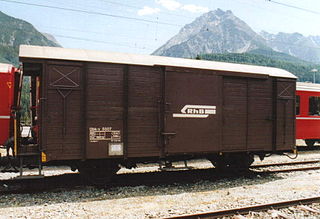Horse wagons
Fixed wheel vehicles
From 1854 to 1914, horse transport wagons were constructed as required. Their codes all started with F, but the designs varied over the years.
The wagons were originally four-wheeled with curved ends (probably for storage). The 1890s design featured six wheels, with the number of stalls doubled from three to six.
In 1894, a new four-wheel van, F52, entered service with a greater capacity than other vehicles in the class. This van was recoded to FF between 1894 and 1897.
The curved end wagons were all scrapped by the 1880s. The smaller capacity wagons were mostly rebuilt to a larger capacity between 1905 and 1910. They were then joined by the FF class, with the entire series being lettered F. This was made possible by the scrapping of the smaller capacity wagons. However, records between 1904 and 1914 are vague, and so it cannot be known which numbers had what done to them and when.
The traffic had mostly evaporated by the 1940s, so the remaining horse wagons were altered to OH and HD vans for general maintenance.
Bogie vehicles
In 1889, the first of six bogie horse wagons entered service, classed FF. Between 1894 and 1897, a larger four-wheel F wagon (F52) was relettered to FF, and so the bogie vehicles were relettered to FFF. This was reversed in the 1910 recodings.
Ten more bogie vans were built in the late 1920s, numbers 7 through 16.
In the mid-1950s, most of the class was altered in some way or another. FF's 1 and 8 were scrapped, while FF's 2-6 were modified for overhead construction on the Traralgon line and became OH 1–5. The underframes of FF 9 and FF 11 became Q 130 and 131 respectively, in 1953. The former was used as the crane jib support for Crane 45 and FF's 7, 10, 12 and 13, which had received upgraded bogies fitted during the 1940s, were reclassed FP in 1956.
By 1975, FP 7 was the only wagon in service, but two underframes were stored. In the 1979 recoding, FP7 became VSPY 7. By the mid-1990s the wagon was moved to storage at Newport.
In 1961, the three remaining FF bogie horseboxes, 14, 15 and 16, were recoded to FH. All three wagons had their bodies scrapped in 1962/1963, but the underframe of FH 16 was rebuilt as HW1, the body supplied by two HW vans. The two van bodies were joined to become a bogie vehicle.
Guard's Van with horsebox, later Carey
| 45DD, later 43C, later Carey | |
|---|---|
 Carey as preserved by Steamrail Victoria | |
| Manufacturer | Victorian Railways |
| Built at | Newport Workshops |
| Constructed | 1901 |
| Refurbished | 1963 |
| Number built | 1 |
| Number preserved | 1 |
| Fleet numbers | 1 |
| Capacity | 4 passengers, 8 shower cubicles |
| Operators | Victorian Railways |
| Specifications | |
| Car body construction | 45 ft 0 in (13.72 m) |
| Car length | 47 ft 8 in (14.53 m) |
| Width | 8 ft 6 in (2.59 m) |
| Height | 13 ft 2 in (4.01 m) |
| Weight | 29.05 long tons (29.52 t) |
| Bogies | 32 ft 10 in (10.01 m) between bogie centres, 6 ft 3 in (1.91 m) between axle centres |
| Coupling system | Screw |
| Track gauge | 5 ft 3 in (1,600 mm) |
In 1901, a guard's van was built with a horse stall. It was numbered as DFDF1, and was built with money allocated to replace van D69, which had been destroyed at Fairfield.
In 1905, the van was modified and expanded to three horse stalls, intended for use on the Warburton Line.
In 1906, it was renumbered to 45DD, then to 43C in 1910. In 1956, the van was given a new incarnation as the second Carey, a shower vehicle. This was to replace the original Carey, which was wrecked at Seymour a few months earlier.
In the new form, the car had two 2-person seats, one at either end; then working towards the centre, there was a toilet and four shower cubicles either side of the central water heater compartment. Half the car was marked for Ladies, the other for Men. The car was immediately painted in blue with yellow stripes to match the steel passenger fleet; in 1984 it was repainted to red for the refurbished Train of Knowledge, and after entering formal preservation with the Seymour Railway Heritage Centre, the car was repainted again into a facsimile of the original Victorian Railways passenger livery, of dark red with yellow dots. In 2014, Carey was re-allocated to Steamrail Victoria and ran its first tour with the group on October 6, 2023.





